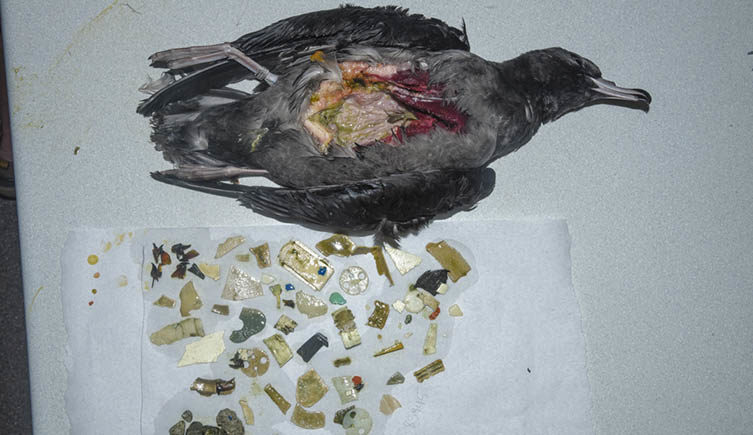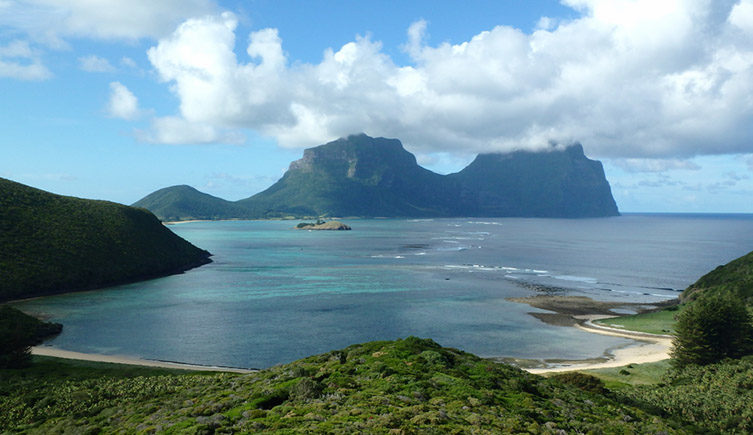
How this is impacting wildlife is of great concern to scientists, with new research suggesting that it may be having long-term health impacts on seabirds.
The tropical idyll of Lord Howe Island, located 600 kilometres off the eastern coast of Australia, is home to a few hundred people but tens of thousands of seabirds.
Despite their isolation, the birds that nest on the island are some of the most plastic contaminated birds in the world. Rather than feeding their chicks the usual diet of fish, adult flesh-footed shearwaters have been providing their young with shards of plastic, including bottle tops, pieces of Lego and biro lids.
In some years between 80 and 90% of all chicks studied have at least one piece of plastic in their stomach. In one extreme case 274 pieces, weighing 64 grams, were found in a single bird.
In these situations, it is almost certain that the chicks will die as they simply cannot get enough nutrients to survive. But what is happening to the other chicks that are not necessarily eating enough plastic to directly kill them, but still ingest small pieces, is still not known.
Dr Alex Bond, the Senior Curator in Charge of Birds at the Museum, has been studying this population of shearwaters for almost a decade.
'Most of the work looking at the effects of ocean plastic on wildlife is around aspects that involve mortality. For instance, a dead bird washes up and it's got plastic in it, or a whale strands and it's got heaps of carrier bags in it,' explains Alex.
'But what we noticed on Lord Howe was that a lot of the seabirds we encountered alive also had plastic in them, and we wanted to try and better understand what sublethal effects that plastic ingestion might be having.'
A preference for plastic
Flesh-footed shearwaters (Ardenna carneipes) are a medium-sized seabird native to the Pacific and Indian Oceans, named after their pale, pinkish feet. The birds breed in southern Australia and northern New Zealand, including on Lord Howe Island.
Breeding in their thousands, the adults go out to hunt for fish and squid at night, returning to their burrows to feed the waiting chicks. In recent years, however, it has become apparent that on Lord Howe it is not only fish that the adults are providing their young with.
For some reason, the adult shearwaters are also eating plastic.
'The birds are mistaking it for food, but why is that?,' asks Alex. 'If you give corn and plastic to a two-day-old chicken it can readily distinguish food from non-food, so why are these shearwaters going out and bringing back things like bottle caps and Tetra Pak lids?
'Ultimately we don't know.'
What Alex and his colleagues do know is that this plastic is having detrimental impacts on the health of the chicks. Birds with just a single piece of plastic in them weigh less than those without.
More worryingly, it also seems to making chicks' wings grow more slowly.
'This can have some pretty significant consequences for a bird that has to fly unaided to the Sea of Japan when they leave the island,' says Alex.
Bloody chemistry
In a new study, published in Environmental Science & Technology, Alex and his colleagues at the University of Tasmania and the Lord Howe Island Museum have been looking at other sublethal effects (those effects that are harmful but not fatal) that ingesting plastics might be having on these birds, including what was going on with their blood chemistry.
'What was interesting was that for certain blood chemistry values we did find some significant effects,' explains Alex. 'For example, birds with plastic had higher cholesterol, they had lower dissolved calcium and they also tended to have more uric acid and more amylase in their blood.
'We assumed that there would be some sort of sublethal effects. But for some of the aspects like cholesterol, we didn't think that it would just be the presence of plastic that would cause higher cholesterol compared to birds with less plastic. Just a single piece is enough.'





Reader Comments
to our Newsletter